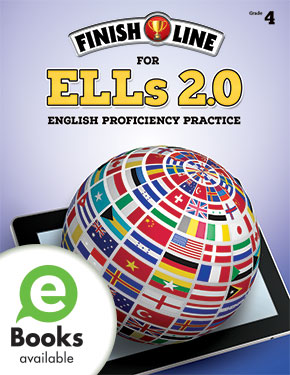Identifying Special Education Needs in English Language Learners
English learners (ELs) face many complicated and multifaceted challenges when it comes to their education. One of the most significant challenges that have been impacting ELs for decades is their disproportionality in special education services.
ELs are often either overrepresented in special education programs (for a variety of reasons) or underrepresented. In this blog, we’ll look at some of these reasons in-depth and discuss how teachers can improve upon identifying special education needs in English language learners.
Why is Overidentification of ELL Students for Special Education So Common?
According to a study from the U.S. Department of Education, ELL students with learning disabilities represented 13.8% of the total ELL community enrolled in U.S. public elementary and secondary schools.
There are many reasons multilingual students are overrepresented in special education programs. In some schools, when ELLs don’t seem to be making the same academic progress as their peers or learning English rapidly, they are quickly referred for special education programs.
Challenges in Screening Processes
One of the main reasons for the overidentification of ELL students for special education programs is the screening process. Oftentimes, special education screening assessments are in English.
Because of this, ELs may appear to have a learning disability (LD) based on screening test results, when in reality, they just struggled to complete the test due to their limited English proficiency (LEP).
Unfortunately, there aren’t many screening assessments available in students’ native languages, and appropriately trained translators are hard to come by. It is difficult to find materials that represent the diversity of cultures that we see in our schools.
Lack of Training for Disability Identification
Finally, ELLs are often misidentified as needing special education services because their teachers are not adequately trained on disability identification for culturally and linguistically diverse students. ELLs can be mislabeled as having a learning disability if they are underachieving in the classroom.
What the teachers aren’t seeing is that there could be many other things at play (typical language acquisition struggles, economic struggles at home, etc.). This becomes an even bigger issue when a major language barrier exists between the teacher, student, and caregivers.
In addition, there are many myths regarding multilingual learners. Some of these myths include:
- The ability to speak English is a measure of intelligence.
- Students who rarely speak have a speech delay or auditory processing disorder.
- Students who don’t understand spoken directions have a learning disability.
- ELs will get the language support they need in special ed classrooms.
The overidentification of ELL students for special education can lead to a high and disproportionate number of culturally and linguistically diverse learners being referred for a special education evaluation. This eventually results in an increased number of ELs being diagnosed with a learning disability.
Fortunately, many of these issues can be addressed through increased teacher training, familiarity, and preparedness to teach or assess diverse populations. Whether it’s a local college lecture or advocating this topic for your next professional development day, improving educators’ awareness of these areas will help ELL students get the support they need.

5 Factors to Consider When Assessing ELLs for Special Education Services
When assessing ELLs for special education services, it’s important to gather information so you can differentiate between learning needs and language needs. Below, we’ve outlined five tips teachers can use when identifying special education needs in English language learners.
1. Collect Information
While this may seem obvious, it’s one of the most important steps in assessing ELL students for special education services. If the student has already been in a school system, review prior school records as well as the student’s home language survey and their language proficiency scores.
If you are a classroom teacher, your school’s ESL teachers are a great resource for language development. If you suspect that an ELL student may need special education services as well, consider talking to teachers who have experience with these students.
Pooling your resources will help you gather important background information on your ELL students so you can be better prepared for your next steps.
2. Gather Observations
There are a variety of techniques teachers can use to support their ELLs in the classroom. Some of these can even aid in observing these students when determining if they have a learning disability.
Observing your ELLs’ behavior in the classroom can be just as, if not more, helpful in spotting a learning disability. Teachers can do this by simply watching their students’ interactions throughout the day.
Conducting one-on-one interviews with students can also aid teachers in getting a better understanding of their student’s needs rather than relying solely on a formal assessment of English language learners with learning disabilities.
3. Communicate with Caregivers
Communicating with your student’s parents or caregivers allows both parties to be fully informed throughout the process. Caregivers need to understand the assessment process as well as their rights.
Getting caregivers involved is also beneficial to the teacher because it opens a line of communication for any questions they may have about the students’ developmental and social history.
Federal law mandates that schools and districts provide communication to caregivers in their native language.
While free services like Google Translate or Microsoft Translate for Educators are helpful for informal communication, it is best to use a qualified interpreter to maintain the integrity of your message. Social services programs, such as Community Action Partnership, may be able to connect you with a local interpreting service.
4. Conduct Assessments in English & Students’ Native Languages
If the student is determined to have a particular learning disability but is not tested in their native language, then the identification could be due to LEP rather than a disability.
Schools and districts are legally obligated to evaluate students in an appropriate language based on their needs.
If you are using an assessment developed by a publisher, contact them to see if other languages are available. If you are unable to find a copy of the assessment in the student’s native language, consider using one of the translation services mentioned above.
In addition, the assessment should not be administered solely through one language modality. For instance, an ELL student may be proficient in listening and speaking, but not reading and writing, or vice versa.
Assessments should cover all of the bases so that you have a clear picture of what the student understands and which area of their development needs support.
5. Continue to Revise Assessments
Every student is different, but as time goes on, you are bound to discover more trends in students’ learning habits and abilities. Identifying special education needs in English language learners is a process that is continuously changing.
Observe how ELL students react to some of the tips listed above. Doing this will allow you to make necessary adjustments to your assessment process. To do this properly, teachers must educate themselves as well.
Educators should be able to understand the differences between an ELL student who is developing and those who may have a learning disability.

The educational needs of ELs require communication and an understanding of the diversity among our student population. With the proper planning and attention, we can deliver instruction that is specific to the individuals’ needs within the ELLs group.

Improve your English learners' performance across the language domains and familiarize them with items tested on WIDA’s ACCESS for ELLs® exam.
View Product →Thank you to Melissa Miller, the ELL contributor, for consulting on this blog post.

